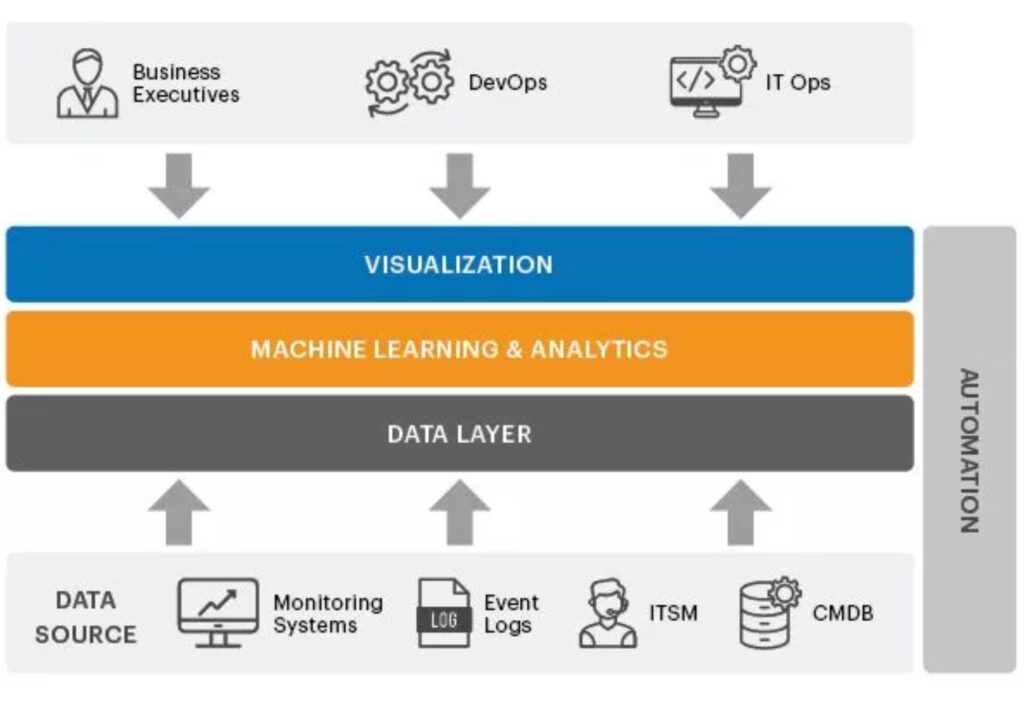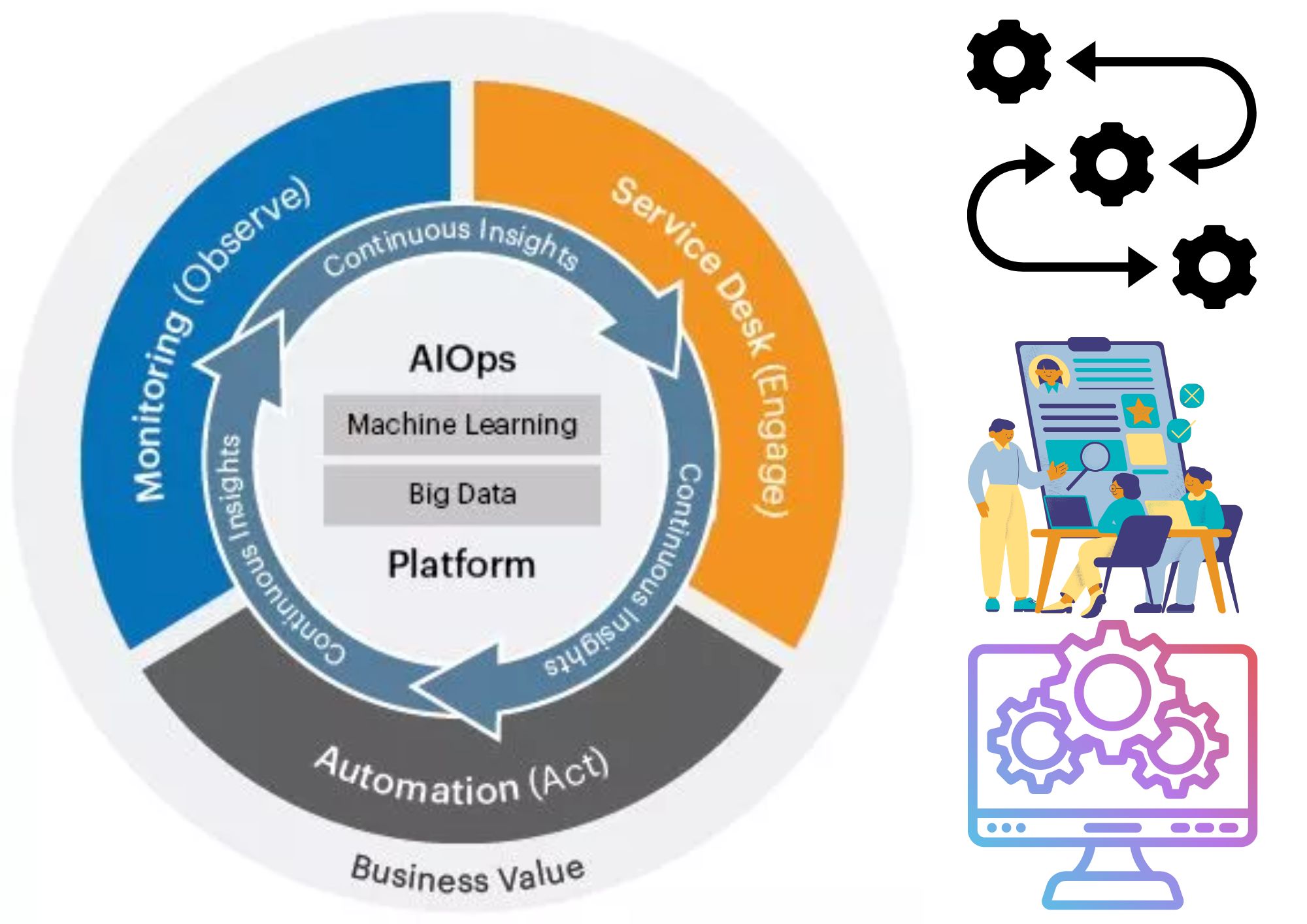Modern IT environments are becoming increasingly complex, and managing them with traditional methods is no longer sufficient.
That’s where AIOps comes in! 
AIOps, or Artificial Intelligence for IT Operations, leverages AI and machine learning to revolutionize IT operations management. Ready to embark on this exciting journey?
Let’s dive into our comprehensive step-by-step guide to transforming your IT operations with AIOps.

Step 1: Understand the Basics of AIOps
AIOps combines data analytics, machine learning, and automation to streamline IT operations management. It empowers IT teams to proactively identify, analyze, and resolve issues faster than ever before.
Insight: Did you know that AIOps can reduce the average time to resolve incidents by up to 60%?
Step 2: Assess Your IT Operations
Before jumping into AIOps, it’s crucial to evaluate your current IT operations. Identify areas where AIOps can make a significant impact, like improving incident management or automating routine tasks.
Example: Company X found that its IT team spent a large chunk of time on manual log analysis, making it a prime candidate for AIOps automation.
Step 3: Choose the Right AIOps Platform
There are numerous AIOps platforms available, each with its strengths and weaknesses. Consider factors like scalability, ease of integration, and cost when selecting the right platform for your needs.
Fact: Gartner predicts that by 2025, 30% of large enterprises will be using AIOps platforms for IT operations management.
Step 4: Establish Clear Goals and Metrics
Set specific, measurable, and achievable goals for your AIOps implementation. Establish relevant metrics to track progress and measure success.
Example: Company Y aimed to reduce Mean Time to Resolution (MTTR) by 40% within six months of implementing AIOps.
Step 5: Train Your IT Team
AIOps is a powerful tool, but it requires a skilled IT team to harness its full potential. Invest in training your team on the chosen AIOps platform and in data analytics skills.
Interesting Scenario: After receiving AIOps training, an IT engineer was able to identify a recurring issue that had gone unnoticed for months, saving the company thousands of dollars in potential downtime.
Step 6: Integrate AIOps into Your IT Environment
Connect your AIOps platform to your IT infrastructure, monitoring tools, and ticketing systems. This integration will enable the platform to gather and analyze data, identify patterns, and make informed decisions.
Step 7: Automate and Optimize
With AIOps in place, start automating repetitive tasks and streamlining processes. Monitor the system’s performance and continuously optimize to ensure maximum efficiency.
Use Case: A retail company used AIOps to automatically scale its infrastructure during peak shopping periods, preventing system crashes and ensuring a seamless customer experience
Step 8: Measure, Learn, and Iterate
Track your AIOps implementation’s performance against established metrics, and learn from the insights it provides. Use this information to continuously improve your IT operations management.
Transforming your IT operations with AIOps is an exciting and rewarding journey. By following this step-by-step guide, you’ll be well on your way to leveraging AI and machine learning to revolutionize your IT operations management. 
Happy transforming!
Thank you for reading our blog, we hope you found the information provided helpful and informative. We invite you to follow and share this blog with your colleagues and friends if you found it useful.
Share your thoughts and ideas in the comments below. To get in touch with us, please send an email to contactus@bindspacetech.com.
You can also visit our website – Bindspace Technologies
FAQs
AIOps, or Artificial Intelligence for IT Operations, is a modern approach to IT operations management that leverages artificial intelligence, machine learning, and automation to streamline processes, proactively identify and resolve issues, and optimize IT environments. Unlike traditional IT operations management, which often relies on manual efforts and reactive problem-solving, AIOps enables IT teams to work more efficiently and predictively.
AIOps enhances incident management by automatically analyzing vast amounts of data from various sources, such as logs, metrics, and monitoring tools. It can then identify patterns, detect anomalies, and predict potential incidents before they occur. This proactive approach helps IT teams resolve issues faster, reducing downtime and improving overall system performance.
AIOps can be beneficial for organizations of all sizes. While large enterprises may have more complex IT environments that can benefit significantly from AIOps, small businesses can also leverage AIOps to optimize their IT operations and minimize manual efforts, ultimately saving time and resources.
AIOps platforms typically require a diverse set of data from various sources, including logs, metrics, event data, and alerts. This data is then analyzed by the platform’s machine learning algorithms to identify patterns, predict issues, and recommend actions to improve IT operations management.
AIOps platforms utilize advanced machine learning algorithms that continuously learn and adapt to the unique characteristics of your IT environment. As the platform becomes more familiar with your system’s normal behavior, it can better distinguish between true anomalies and false positives/negatives. This ongoing learning process reduces the likelihood of false alerts and ensures a high level of accuracy in anomaly detection.
When selecting an AIOps platform, consider factors such as ease of integration with your existing IT infrastructure, scalability, customization options, and cost. Additionally, look for platforms that offer robust data analytics capabilities, as well as strong support and documentation to help your IT team get the most out of the solution.
AIOps platforms can analyze historical data and predict future resource requirements based on trends, usage patterns, and growth projections. This information can be used to optimize resource allocation, plan for capacity upgrades, and ensure that your IT environment is always running efficiently.
AIOps platforms provide IT teams with a centralized, data-driven view of their IT environment. This visibility enables better collaboration and decision-making, as teams can quickly identify issues, assess the impact of changes, and make informed decisions based on real-time data and insights.
Most AIOps platforms are designed to integrate seamlessly with a wide range of IT monitoring and management tools. This integration enables the platform to gather and analyze data from multiple sources, providing a comprehensive view of your IT environment and enhancing its ability to detect anomalies and predict issues.
The ROI of implementing AIOps can vary depending on factors such as the complexity of your IT environment, the efficiency of your current IT operations management, and the specific AIOps platform you choose.
However, organizations typically see significant benefits from AIOps implementation, including reduced downtime, increased operational efficiency, and improved resource utilization.
These improvements can lead to cost savings, increased productivity, and enhanced system performance, all of which contribute to a positive ROI. Additionally, AIOps can free up IT staff to focus on more strategic initiatives, further increasing the value of your investment.










